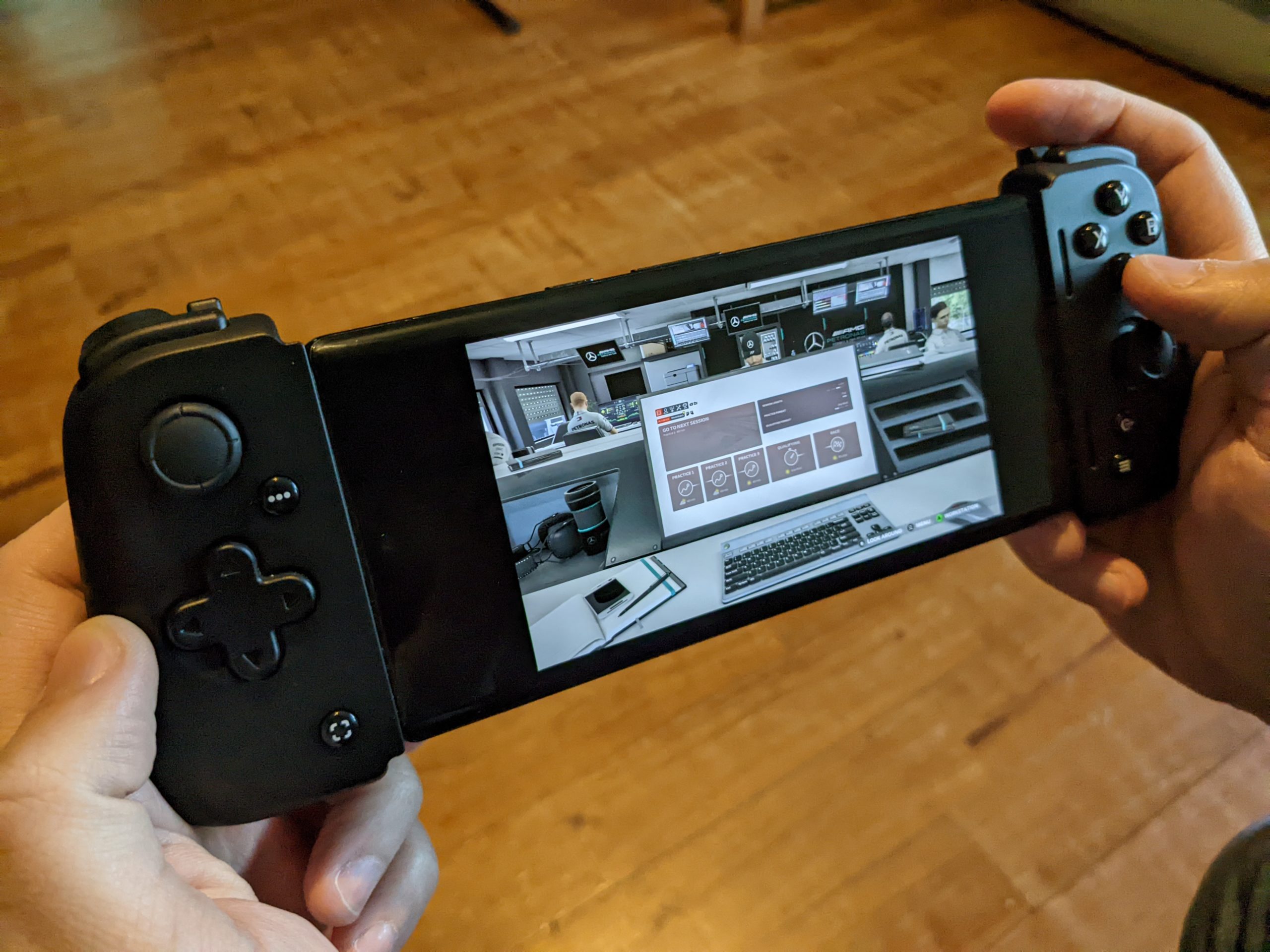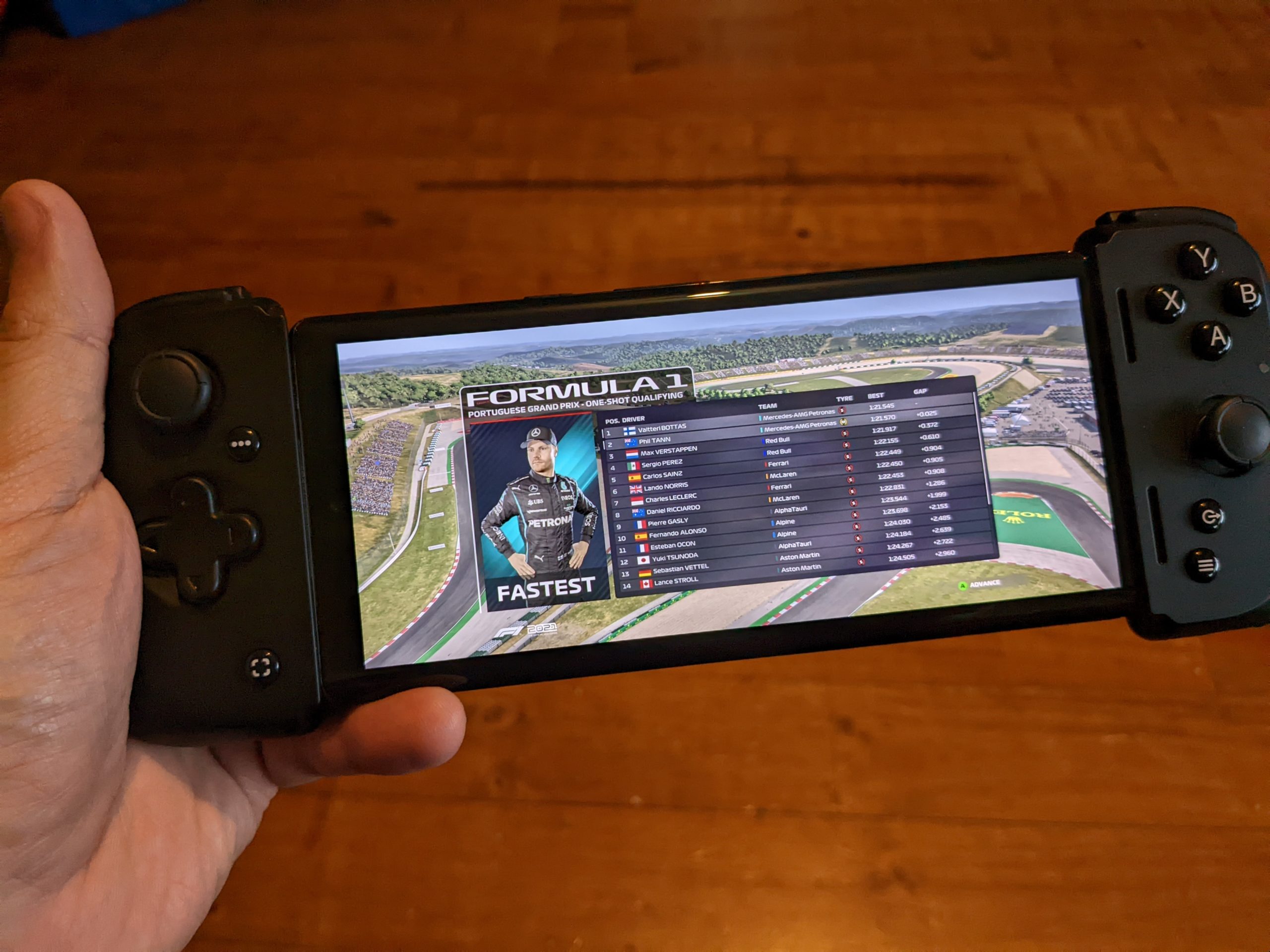Razer has been a mainstay in mobile phone controllers for years, but that space is getting crowded so there’s time to rest. With the addition of the Kishi V2 into its range, Razer has signalled to competitors it’s time to update or become obsolete. This is particularly prevalent with phones becoming more powerful and mobile games becoming more immersive.
What is it?
The Razer Kishi V2 is a mobile gaming controller that has been designed to integrate well with your phone, providing a cohesive gaming experience. It does this through a number of well thought out design elements and features.
The first, and possibly most important design decision that has been made is for the Kishi V2, to connect via USB-C rather than Bluetooth. This results in a few very positive outcomes:
- No battery or charging needs for the controller
- USB-C charging passthrough allows you to charge your phone while gaming
- When you push a button, the game responds – there is no noticeable lag
The mechanics of attaching the controller to your phone is a spring-loaded, clamp connection. Provided you position it well, ensuring a good connection when you put your phone in it won’t accidentally come loose while gaming.
Once connected, while it’s obviously “different” due to the phone being in the middle of the device, the button layout is going to be very familiar for any console gamer. Dual analogue sticks, d-pad, a, b, x and y buttons as well M1, M2, R1, L1 (digital) and R2, L2 (analogue) buttons. Ultimately, you’ve got the same button options as an Xbox or PlayStation controller.
The feel and functions
If you’re used to the more ergonomically comfortable console controller, then this takes a bit of getting used to. It’s not a huge or horrible adjustment, but it’s different enough that it will take a little while. A prime example is racing sims, where I would normally have to move my right index finger around 2 cm to hit “full throttle”, on the Kishi V2 it’s noticeably less meaning 100% throttle sooner and that’s a bit of a problem in the early stages. Once you’ve adjusted to the differences, it’s actually a really comfortable controller to use for extended gaming sessions.
What aids that adjustment period is the layout of the buttons and triggers that are near enough to the layout of a standard console controller to be familiar. Not only that, they’re quite tactile and the digital buttons are “clicky” which gives the Kishi a really nice, arcade feel to it.
Depending on the game you’re playing and the buttons you’re using, you can customise the function mapping for every single button. This is through the Razer Nexus app, which is also an interface to link to compatible games, and services (such as Game Pass) and to live stream your gaming to Facebook or YouTube.
The buttons are really strangely satisfying with their tactile click and smooth movement on the analogue options. Initially, I had a mild concern about the durability of the Kishi V2 because it felt so lightweight. Once a phone was attached, that concern disappeared because it feels solid once your phone is mounted in the controller.
Another nice to have feature on a mobile game controller like this is passthrough charging. As you’d expect from a manufacturer like Razer, it’s absolutely there and does what it is supposed to.
What that all does do, is gives a lot of functions and a great gaming experience. In my case, I’ve done a bit of mobile gaming as well as hooking up through Steam Link and playing both NBA and Racing simulator games. Either way, it’s been a comfortable and familiar experience from the get go. I’ve had a great time doing this review, not just because it meant a bit of game time but it was a good gaming experience.
The Nexus App
The Razer Nexus app is a simple interface that is designed to make navigating your games and device easier. It has an interface to — as earlier mentioned — map the controller buttons to whatever feature you wish, making the Kishi V2 highly customisable for any game.
For gamers who want to stream their adventures, this is also where you’re able to start a live stream of your gaming to Facebook or YouTube. It would be nice to be able to stream to Twitch, but that’s not necessarily achievable with the agreements that would need to be reached.
The app is functional, but feels like it’s not quite finished and knowing Razer there will be updates in the future.
Are there any issues?
Of course, there’s always something that could be better and this is no exception. None of these is particular deal-breaking issues, but they do warrant a mention.
Let’s start with the charging port mentioned just a paragraph ago, it works… but it’s not what I’d consider fast. In fact, even with Google’s own charger connected neither the Pixel 6 Pro nor Pixel 6a charged particularly quickly. On more graphic and processor-intensive games, having the charger plugged in maintained the battery level. I guess that’s a positive, but it’s not a great outcome if you’re in for a long gaming session.
The second thing I’d really like to see implemented is a way to fit your phone with a case still on it. Even the Pixel 6a (review coming this week) with Google’s own, rather slick case on it, needed me to take the case off before connecting the Kishi V2. I feel like it wouldn’t be too hard to add some bumpers behind the phone to allow cases to remain on a phone while in use, in the controller.
Finally, particularly given the USB-C passthrough charging, I’d love to see a 3.5mm jack to allow earbuds or headphones to be attached. As it stands, the setup is clearly aimed at either using the phone speakers or a Bluetooth headset. Just a tiny addition would cater to a lot of extra users’ needs.
Should you buy one?
If you’re playing games on your mobile (or planning to) then the short answer is yes. I’ve tried a number of mobile phone controllers and this is the most versatile and functional to date. In my eyes, this is the companion to have for anyone who plays a lot of games on their phone.
It ticks all the right boxes for comfort, ease of setup, and ease of use and is — through the Nexus App — customisable to your needs. It feels pretty solid so should stand the test of time, and is widely compatible across Android phones with a USB-C connection.
It’s a well-designed and thought-out experience, although the app is lacking a bit of polish, the package is worth every cent of the $169.95 asking price.














